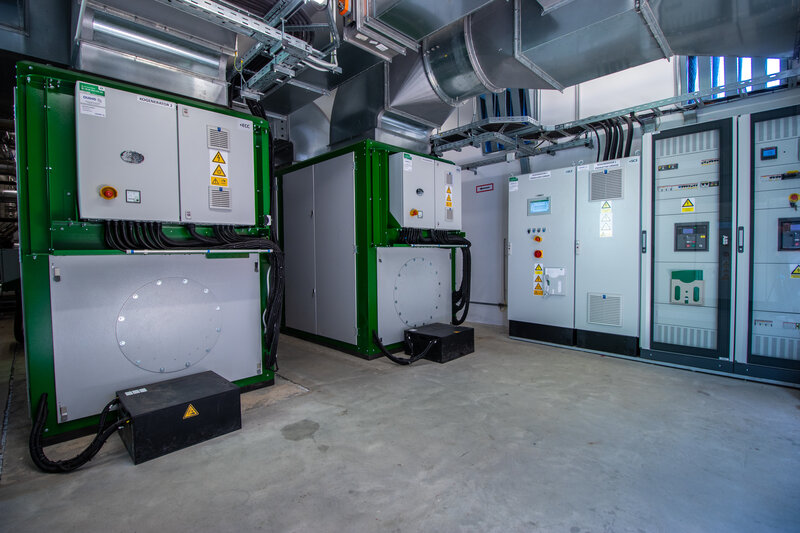Modernization of Rijeka’s District Heating System
Cogeneration Implementation at Malonji, Srdoči, and Vežica Heating Plants in Croatia
Facts & figures

Rijeka’s district heating system, managed by Energo d.o.o., faced the challenges typical of aging infrastructure: low energy efficiency, high operational costs, and reduced reliability of heat supply. Energo d.o.o. launched the City Heating System Renewal Project (KK.04.3.04) — a comprehensive modernization initiative aimed at improving energy efficiency, ensuring stable heat supply, and reducing environmental impact across the city’s heating network. The project included the renovation of four production plants and the integration of 2G Energy cogeneration (CHP) units at three key locations: Malonji, Srdoči, and Vežica. Cogeneration units were supplied by Duing d.o.o., and design and implementation were executed by AT Eneko d.o.o. and Mi Maris d.o.o.
Malonji Heating Plant
The modernization began at the Malonji heating plant, where two high-efficiency CHP units were installed:
- agenitor 412 – 445 kW electrical / 617 kW thermal output
- agenitor 408 – 360 kW electrical / 446 kW thermal output
Both units operate on natural gas and are integrated into the district heating network, supplying heat to local users and feeding electricity into the grid. This first phase established the foundation for a more reliable and efficient energy system, marking the start of Rijeka’s transition toward sustainable heating.
Srdoči Heating Plant
Following Malonji, modernization continued at the Srdoči heating plant in the city’s western district. Here, a single agenitor 412 cogeneration module with an electrical output of 445 kW and a thermal output of 617 kW was installed. The unit was integrated into the existing boiler system, forming a hybrid setup that ensures continuous and efficient heat production alongside electricity generation for the grid.
Vežica Heating Plant
The largest phase of the project was implemented at the Vežica heating plant — the city’s main production facility. To meet high energy demand, two high-capacity cogeneration units were installed:
- avus 800e – 854 kW electrical / 977 kW thermal output
- avus 1600e – 1714 kW electrical / 1944 kW thermal output
These units were integrated with two existing boilers, forming a flexible and robust system capable of covering both thermal and electrical energy needs. Compared to Malonji and Srdoči, the Vežica plant required substantially greater capacity to ensure reliable service to its large user base.
Conclusion
The completion of the project represents a transformative milestone in the city’s energy transition. Through the installation of advanced cogeneration technology at Malonji, Srdoči, and Vežica, Rijeka now operates a modern, efficient, and environmentally responsible district heating network. This integrated approach serves as a regional example of how cities can successfully modernize legacy infrastructure, enhance energy independence, and provide reliable, sustainable heating for residents and businesses alike.

















